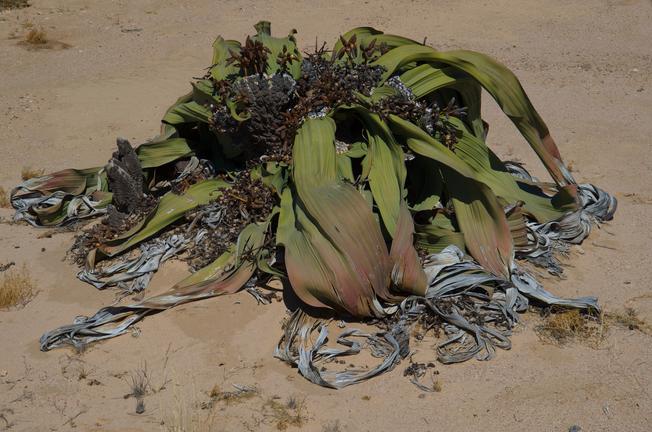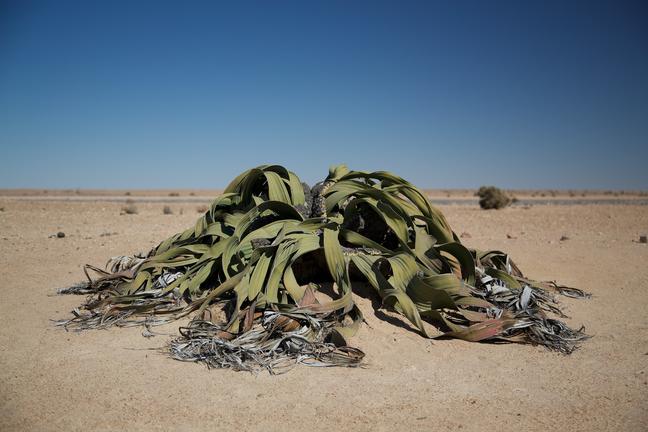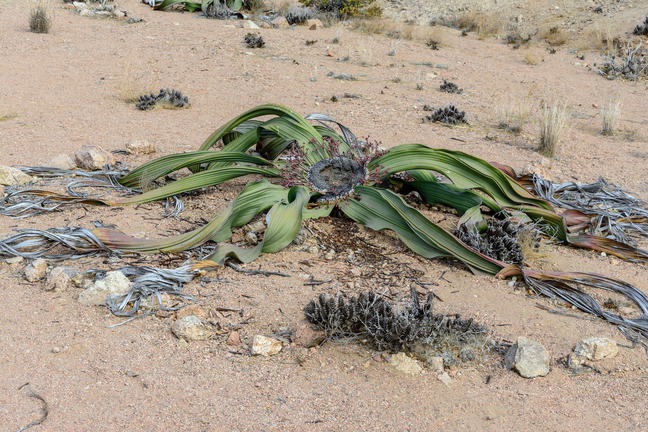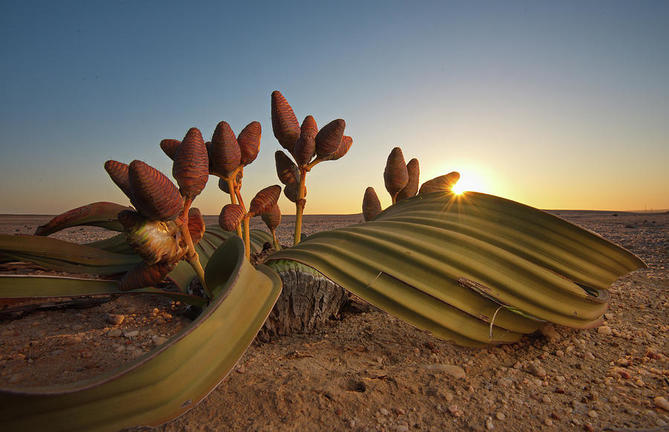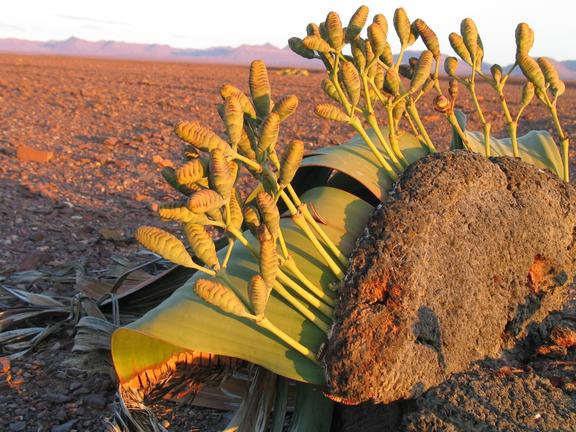Namibia’s famous fossil plant - Welwitschia mirabilis is one of the most extraordinary plant species on earth.
The Weltwitschia mirabilis looks bizarre: its stem is about one meter thick but no more than 50 cm high and it sports only 2 leaves that lie on the ground. These can grow up to 8 m long and they continue to grow throughout the plant’s life. The plant can live more than 1,000 years. Male and female plants have cones similar to those on conifers, but pollen is disseminated by animals such as flies or wasps, similarly to pollen dissemination among modern flowering plants.
While its early ancestors lived over 112 million years ago on several continents, the only surviving species has taken refuge from the tough competition with the modern flowering plant in the extremely dry zones of the northern Namib in Angola and Namibia.
From here you can head off to view a large stand of the biggest concentration of Welwitschia mirabilis in the Namib Desert. In addition to the plant’s unusual appearance, it is also its great age that adds to the intrigue, giving rise to its description as a living fossil plant. The age of one of the welwitschias growing on this plain – indicated by signage – has been estimated at over 1 500 years. Conservationists warn that visitors should not walk too near the plants, as their shallow, lateral roots are close to the ground surface.
The Welwitschia, in reality a tree that has been dwarfed by the rigours of the desert, has adapted to live in extremely dry conditions. To survive on the rare and sporadic rainfall in the areas where it grows, the plant gathers water with its leaves as well as with its roots.
The Welwitschia’s large leaves have pores that open when precipitation occurs and close when the temperature rises. They keep the ground cool, and also prevent the soil around them from eroding. Only two leaves grow from the low, stunted stem. They are very broad and as they grow longer, extend to great lengths, dividing many times and drying out and curling at the ends.
Welwitschias play an important role in the desert ecosystem. Beetles, spiders, lizards and small mammal species keep refuge under the big leaves of this curious plant. It is endemic to the Namib Desert, growing in a narrow belt, about 30 to 40 km inland, from the Kuiseb River in the south more or less all the way northwards to Mossamedes in Angola.
Numerous other interesting plant species can be viewed in the area, as well as over 100 species of lichen. The dollar bush has bright-green fleshy leaves, their round coin-like shape giving rise to its name. Many of these bushes can be seen in the northern section of the Namib-Naukluft Park.
Welwitschia mirabilis grows in isolated communities in the Namib Desert, in a narrow strip, about 1 000 km along up the coast from the Kuiseb River in central Namibia to Mossâmedes in southern Angola. The plants are seldom found more than 100 to 150 km from the coast, and their distribution coincides with the fog belt.
Derivation of name and historical aspects
Welwitschia mirabilis was discovered by the Austrian botanist,explorer and medical doctor, Friedrich Welwitsch, in 1859 in the Namib Desert of southern Angola. The story goes that he was so overcome by his find that he knelt down next to it and simply stared! ThomasBaines, the renowned artist and traveller, also found a plant in the dry bed of the Swakop River in Namibia in 1861. Welwitsch sent the first material of Welwitschia to Sir Joseph Dalton Hooker, Director of Kew, in 1862. Hooker described it and named it in honourof Welwitsch, despite the fact that Welwitsch recommended that it be named Tumboa, its native Angolan name. Its species name mirabilis means marvellous or wonderful in Latin. The specific name was later changed to bainesii to honour both men involved in its discovery, but by the rules of botanical nomenclature, mirabilis is the current and valid name.
Because it is so different from other gymnosperms, Welwitschia was placed in its own family in a small order of gymnosperms called the Gnetales. It shares this order with two other families each containing one genus: the Gnetaceae (Gnetum, 30 species) and the Ephedraceae (Ephedra, 40 species). All three genera can stand by themselves, and the relationships between them are remote. There is nothing else like them, and of the three, Welwitschiais the most remote.
Welwitschia is thought to be a relic from the Jurassic period when gymnosperms dominated the world's flora, its ancestor trapped in an environment that slowly but progressively became more arid, and all its close relatives long since disappeared
